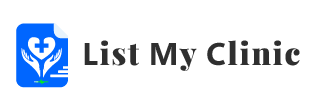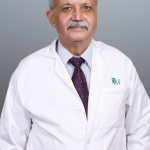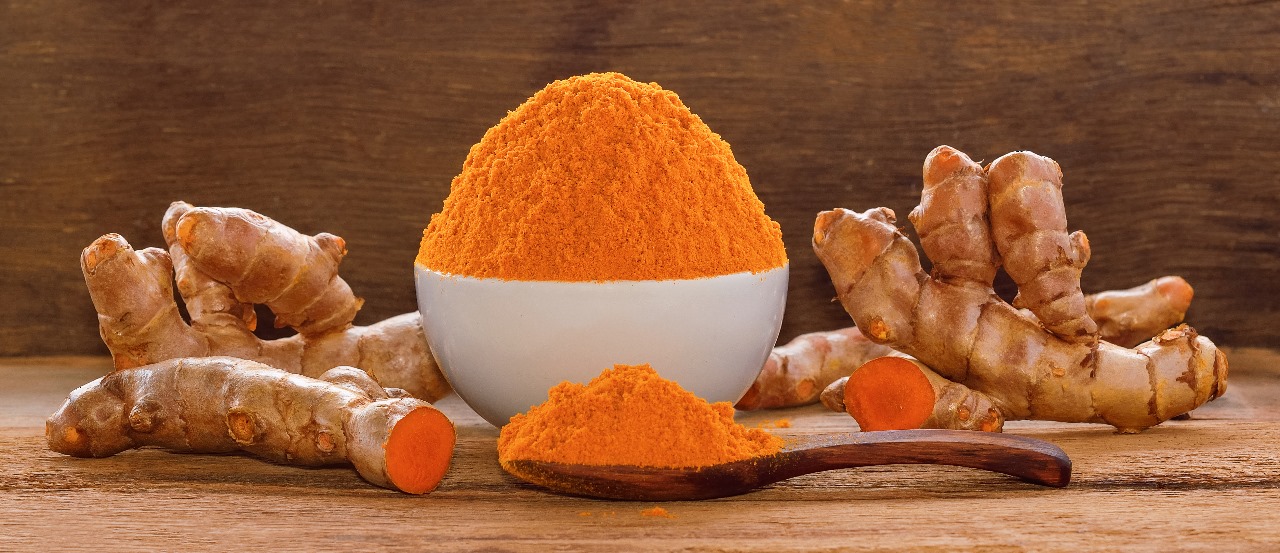
Turmeric Vs. Curcumin: Can You Take Both of Them?
We can use turmeric and curcumin together. Turmeric and curcumin are often used interchangeably, but they are not entirely the same. In this article, we will explore the differences between the two, the benefits each one offers, and how combining them can provide health benefits for us.
What are Turmeric and Curcumin?
- Turmeric – a plant belonging to the ginger family, is widely known and used as a spice in Asia, especially in India, China, etc. It is often heard of and recognized for its role in coloring and flavoring curry dishes. Notably, turmeric is commonly known as an herb in traditional medicine.
- Curcumin is well-known for its strong anti-inflammatory and antioxidant effects. It helps reduce symptoms of chronic inflammation, such as arthritis and supports slowing down the aging process by reducing oxidative stress in the body.
- In an experiment on diabetic rats, the group that was fed a diet with curcumin supplements showed positive improvements. After 6 weeks, rats in the curcumin group maintained better antioxidant levels and significantly reduced inflammation markers like IL-1β, VEGF, and NF-kB (which usually increase with inflammation). Although curcumin didn’t significantly lower blood sugar levels, its effect on controlling inflammation markers and protecting cells was evident [1].
Common Benefits of Turmeric and Curcumin
- Turmeric offers many health benefits. One notable benefit of turmeric is its ability to prevent diabetes. This has been demonstrated through a study with mice. [2]. Moreover, it also supports digestive health, enhances immune function, etc. Because of these benefits, turmeric is not only a spice used in cooking but is also regarded as a common herb in medicine.
- As for curcumin, its most significant effect is its anti-inflammatory properties, skin beautification, etc. In particular, we are aware of curcumin’s effects on gastrointestinal-related diseases. Furthermore, it has an impact on the brain and memory. Therefore, this compound has been heavily exploited for the production of health-supporting supplements.
Turmeric Vs. Curcumin: How Do They Differ from Each Other?
As we have just explored above, both turmeric and curcumin offer many health benefits. However, to avoid confusion, we need to distinguish between them. So, how do turmeric and curcumin differ?
Benefits
- Turmeric and curcumin each have distinct benefits, even though curcumin is the main compound found in turmeric.
- Turmeric is known for its properties, as it contains many other beneficial compounds besides curcumin. The benefits of turmeric include its ability to reduce inflammation, support overall health, and promote digestive health, etc.
Side Effects
As for turmeric, it is considered safe since it comes from nature. However, caution should be exercised during use, as excessive consumption may lead to stomach pain.
Regarding curcumin, although its safety has been validated, some unwanted side effects have been recorded. In one study, 7 participants used doses ranging from 500 mg to 12,000 mg over 72 hours and experienced symptoms such as diarrhea, headaches, rashes, and yellow-colored stools. [4]. Additionally, another study showed that a participant who used between 0.45 g and 3.6 g of curcumin daily for 1 to 4 months reported feelings of nausea and diarrhea, etc. [5].
Turmeric Vs Curcumin: Which is Better to Choose?
When it comes to choosing between turmeric and curcumin, it depends on each person’s needs and usage goals. Turmeric, as a spice, contains many compounds and can be naturally ingested through food (it can be absorbed by being processed into meals and beverages). This method is suitable for those who do not prefer to take medications and whose symptoms are mild, only needing to supplement nutrients through dietary intake.
Curcumin, on the other hand, is more suitable for those looking to treat inflammation at higher doses. Curcumin will support your health better for chronic inflammatory conditions. Therefore, in this case, choosing high-dose curcumin supplement products would be more appropriate.
Can You Take Both Turmeric and Curcumin?
Of course, we can use both turmeric and curcumin together. Combining the two can provide optimal benefits for your health. So far, there have been no reported cases of adverse reactions between turmeric and curcumin. Using them together can enhance antioxidant and anti-inflammatory capabilities and provide more comprehensive health support. However, it is essential that when using them, you consult with a health professional regarding the dosage, and you should closely examine the ingredient list of products containing curcumin to ensure that you are not allergic to any of its components.
How to Take Turmeric and Curcumin Together?
There are many methods to use both together.
- First, you can incorporate turmeric powder into your daily diet, such as in smoothies, soups, curries, etc. Additionally, you can use a curcumin supplement (following the dosage instructions provided by the manufacturer) after meals.
- A more optimal method is to choose a supplement that contains both turmeric and curcumin. Currently, there are several supplements available on the market that can meet this need, such as Turmeric Curcumin with Black Pepper, etc. This method will be very suitable for busy individuals who do not have time to prepare too many things, such as cooking.
Where to Buy Turmeric and Curcumin Supplements?
When discussing where to buy reputable turmeric and curcumin supplements, we need to choose truly trusted brands. You might consider Vinatura Store, which provides high-quality products that optimize health benefits.
One standout product line from Vinatura Supplements is the Turmeric Curcumin with Black Pepper product. This supplement combines turmeric and curcumin, significantly enhancing the absorption of curcumin in the body. This combination can provide powerful anti-inflammatory and antioxidant effects, making it an excellent and reliable choice for everyone. Additionally, this product contains black pepper, which helps increase the bioavailability of curcumin. This is the perfect choice.
Conclusion
Through this article, we can see that both turmeric and curcumin offer significant health benefits, but they still have their distinct differences. Using both is entirely possible, but it is advisable to consult with a specialist and have appropriate methods of use to avoid unwanted side effects. Finally, when choosing supplement products, it is essential to select those from reputable brands to avoid health risks.
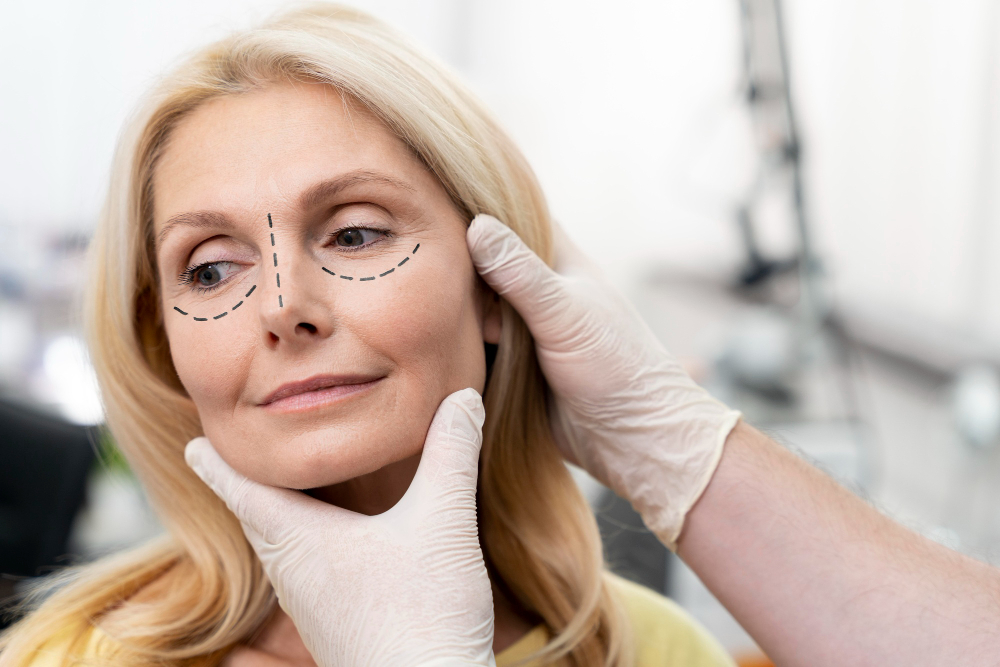
Top 5 Gentle Eye Exercises for Blepharoplasty Recovery in Dubai
One of the most popular procedures at Ecla is blepharoplasty, or eyelid surgery, which tends to get rid of excess skin and fat around the eyes for a refreshed look. Along with aesthetic benefits, there are some psychological benefits of blepharoplasty in Dubai, such as boosting confidence and improving self-esteem by enhancing one’s appearance. After surgery, it is important to take good care of the eyes, and some eye exercises will help a lot in this process. Gentle movements prevent swelling, promote circulation, and help make sure that you do not experience issues like stiffness or muscle atrophy later on. Below, we explore five essential eye exercises to help boost recovery after blepharoplasty in Dubai.
Blinking Exercises
Closing and blinking your eyes may actually become difficult for some patients after undergoing blepharoplasty, as this could just be due to swelling and tightening of the skin. Gently blinking exercises can help to restore normal eye function and prevent dryness.
How to Perform
- Just sit and let your face muscles loosen.
- Close your eyes slowly, as if going to bed. Hold for one second.
- Slowly widen your eyes, opening as much to make the upper and lower eyelids move easily.
- Repeat this process for the next 10-15 times.
Benefits:
This eye blinking exercise helps to keep moist, and maintaining the moisture helps avoid dryness for patients post-blepharoplasty. They also enhance blood circulation to the area of the eyelid, which helps it recover quicker. This is a light movement exercise helping to activate muscle around and not burden a surgery point.
Palming Technique
Palming is a relaxation exercise that helps to reduce eye strain and heal by releasing the tension around our eyes. It helps to relax the patients after the blepharoplasty procedure, and it promotes circulation around the eyes without causing any pressure.
How to Perform:
- Comfortably sit with eyes closed.
- This will likely not be enough; rub your hands together quickly to generate some heat.
- Place the palms of your hand over your closed eyes without putting pressure on them, and feel the heat soothing in.
- Regularly practice deep breathing and relaxation techniques throughout your day for 5 to 10 minutes.
Benefits:
A great way to enhance blood flow and aid healing after blepharoplasty is through palming. Palming improves post-surgery comfort and reduces strain as it calms the nerves to promote relaxation. It is especially great for patients who are early in recovery and more active movements may not be possible yet.
Eye-rolling exercises
Gentle exercises of eye rolling after blepharoplasty can entail improving the movement and flexibility of muscles within the eyes. These movements lay the foundation for keeping your joints free from being stiff and to come back into full moving-on-track again.
How to Perform:
- Be relaxed, sit comfortably, and look straight forward.
- Slowly start rotating your eyes in clockwise direction and then in anticlockwise direction.
- Repeat this exercise 5 to 10 times in each direction, and also take care not to overwork your eyes.
Benefits:
The eye rolling exercise helps the flexibility in the eye muscles, and it relaxes, which is good to achieve after undergoing blepharoplasty. This exercise increases lymphatic drainage on the eye area, which can lessen any puffiness and help with swelling. It also helps in developing the muscles that hold your eyelids up; therefore, it fastens recovery and makes it look more natural.
Focus Shifting Exercise
Prescribed focus-shifting exercises to ensure that the vision and muscle control are clear, this gets hampering after blepharoplasty. This is one of the exercises that provides focus between near and far-sighted objects to train your eye muscles, but in a safe way so that they do not get overworked.
How to Perform:
- Hold your finger or a small object, which should be around 6 inches away from your face.
- Look at the object for 5 seconds and then quickly look away at a distant target (a wall or an object on the other side of your room) for another 5 seconds.
- Repeat the process of focusing near and far for 10 times.
Benefits:
Focus-shifting exercises that improve visual acuity and coordination can be temporarily affected by swelling, which occurs often after blepharoplasty. This practice also enhances blood flow to the eyes and surrounding tissues, which helps them, recover faster. It’s an effective way to keep your eye muscles active without applying force to incisions made with surgery.
Light Eye Massage
The area under the eyes will show less swelling and heal faster with increased blood flow by performing a light, gentle massage around this region. This exercise needs to be done with great care so as not to put any pressure on the surgical field directly. Check with your surgeon in the Ecla Clinic in Dubai before attempting this exercise.
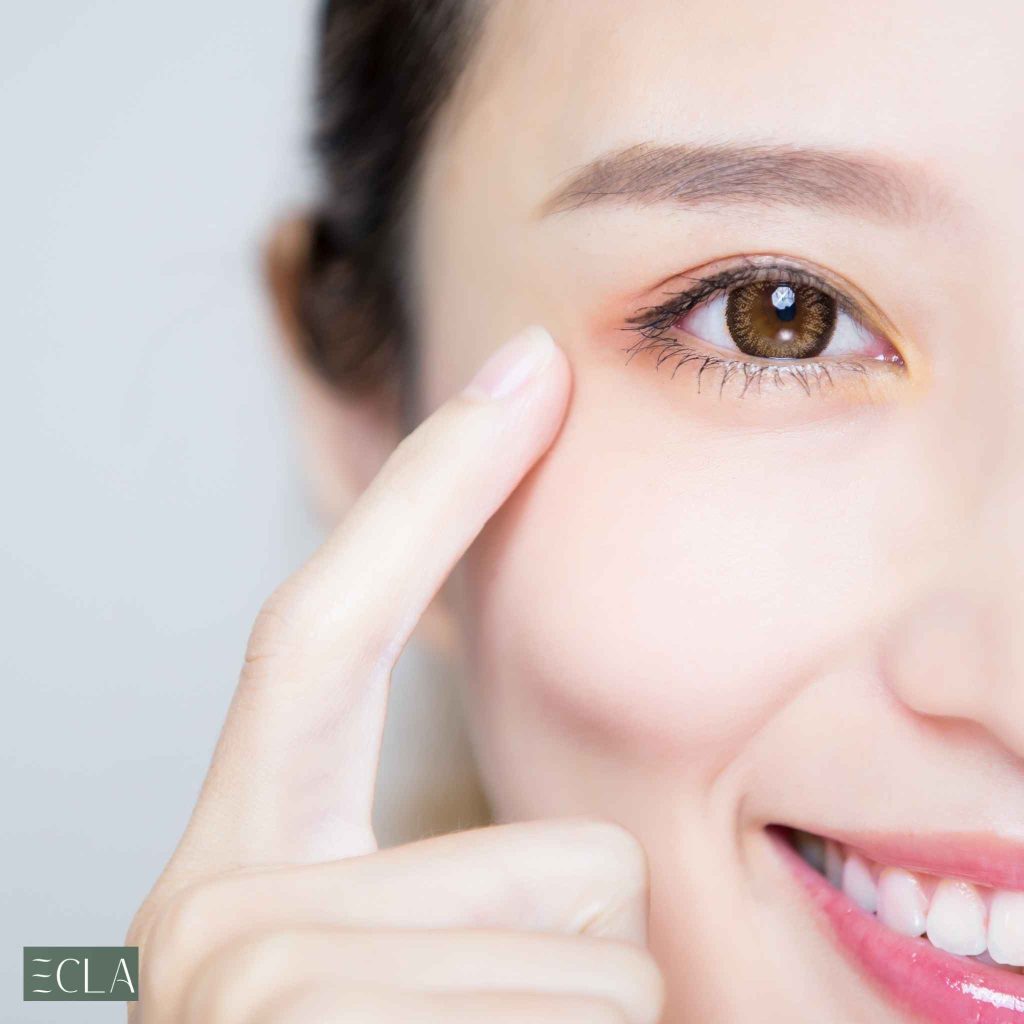
How to Perform:
- Not all fingers are equal; the ring finger produces less pressure by nature.
- Begin at the top corner of your nose and slowly tap around both eyes using the circular method outwards along with all cheekbones.
- Do this gentle tapping for 1-2 minutes, making sure no tap is directly on the incision site.
- You may also use a cold compress to help reduce any swelling after the massage.
Benefits:
A light massage can ease the eye-related stress that comes after the surgery, including reducing swelling and improving lymphatic drainage. This increases blood flow and provides more oxygen and nutrients to the healing tissue. Caution should be observed to ensure that the massage is light and does not disturb the surgical site.
Tips for Maximizing Recovery after Blepharoplasty in Dubai
In addition to performing these eye exercises, here are some guidelines to ensure a smoother recovery after your blepharoplasty in Dubai:
- Follow Post-Operative Care Instructions: Your team at Ecla Clinic will give you thorough aftercare advice to help manage swelling, alleviate discomfort, and apply cold compresses or use eye drops when suitable. By truly adhering to these guidelines, you can accelerate the healing process.
- Avoid Straining Your Eyes: Don’t overwork your eyes by reading, watching TV, or using screens for sustained periods in the first few days after surgery. This can delay the healing process or aggravate it further.
- Stay Hydrated and Maintain a Healthy Diet: The importance of adequate nutrition that includes all the vitamins, minerals, etc. is re-emphasized in recovery. Eating foods full of vitamins and antioxidants, such as leafy greens or fruits, will help your tissues heal better while lowering inflammation.
- Take Plenty of Rest: After blepharoplasty, rest is key to healing and one of the most important things you can do. Sleep with your head elevated; this will help prevent swelling and decrease pressure against the eyes.
Conclusion
Blepharoplasty in Dubai, particularly at top clinics such as Ecla Clinic, revolutionizes the aesthetic look of men and women who wish to look young. Doing gentle exercises for the eyes like blinking, palming, eye rolling, and focus shifting, along with light massage, further assists in the healing so that recovery is smooth and without any hitches. Created to help strengthen the surrounding muscles, reduce inflammation, and improve circulation without stressing your recent operation.

The Future of Onsite Healthcare: 7 Key Trends and Innovations for a Healthier Workforce
Workplace injuries and health issues are a huge problem for businesses in various industries, with almost $3 trillion lost annually due to downtime, workers’ compensation claims, and reduced productivity.
To alleviate the problem, more and more organizations turn to onsite healthcare as it offers immediate medical support and proactive health management right at the workplace. However, with time, the needs of the workforce have changed, and so too has the face of onsite healthcare.
In this blog post, we’ll explore some of the most important trends and innovations that will shape the future of onsite healthcare, as well as how these can benefit employers and workers alike.
H2: Why is Onsite Healthcare so Important?
From the physical demands of manual labor to the mental stress of high-pressure corporate jobs, there are numerous health issues employees encounter in the workplace, including:
- Workplace injuries
- Chronic conditions such as musculoskeletal disorders
- Mental health issues like anxiety and depression
As more companies recognize the benefits of having immediate access to medical care, the demand for onsite healthcare is rising.
This service helps employers address health concerns promptly, reduce downtime, and prevent minor issues from escalating. It also gives you peace of mind that employees remain healthy and productive, making it a win-win for everyone.
H2: Key Trends and Innovations Transforming Onsite Healthcare
Here are the seven trends and innovations that are actively transforming the onsite healthcare field:
1. Telemedicine Integration
Thanks to telemedicine, employees can reach out to healthcare providers via video calls, chat, or phone consultations. This is great for companies with remote or dispersed workforces where onsite care might not be easily available.
With access to timely consultations, diagnoses, and even prescriptions right at their fingertips, employees no longer need to pay in-person visits. This saves lots of valuable time and ensures that workers receive the attention they require wherever they are.
2. AI and Predictive Analytics
AI can detect trends and forecast possible health hazards by examining vast databases, which enables proactive interventions.
Predictive analytics, for instance, can estimate the risk of workplace injuries based on an employee’s job role, work environment, and health data. It also enables you to put in place specialized health programs and safety measures, which lowers the chance of accidents and raises workplace safety standards overall.
3. Mental Health Support
The demand for mental health support has increased in the post-pandemic period as more employees recognize that mental well-being helps them reduce stress and anxiety.
Companies are integrating mental health support into their onsite programs, offering services such as counseling, stress management workshops, and mental health screenings. In turn, this leads to a more supportive and productive work environment.
4. Wearable Technology
Employee health data (such as vital signs, physical activity, and stress levels) can be monitored in real time thanks to wearable activity trackers and smartwatches.
This data can be used to provide personalized health insights, alert employees to potential health issues, and enable early intervention. For example, wearables can identify exhaustion or dehydration and notify workers to take a break or drink more fluids before symptoms appear.
5. Mobile Health Units
Mobile health units are like clinics on wheels – they are equipped with the needed technology and manned by medical personnel. Their aim is to offer easy access to healthcare as they are located right on the job site.
For businesses like construction or manufacturing, where employees might not have easy access to off-site medical facilities, mobile health units are quite helpful. An example of such facilities could be Vega device by Sensonica, capable of quick recovery of joint and muscle injuries. As a result, fewer lengthy off-site visits are required, allowing staff members to receive care without interfering with their workday.
6. Virtual Reality (VR) for Training and Rehabilitation
In onsite healthcare, VR can be utilized to provide realistic training experiences that prepare staff members for real-life risks without putting them in actual danger.
Virtual reality is also utilized in rehabilitation programs to aid in the faster recovery of injured workers. For example, it can direct physical therapy exercises, improving the effectiveness and engagement of the rehabilitation process and allowing employees to get back to work sooner.
7. Personalized Health Programs
Personalized health programs leverage data from wearable devices, health screenings, and predictive analytics. This enables them to address specific health risks, dietary needs, and fitness goals.
These programs can also be modified to accommodate changes in the lifestyle and health of staff members. In this manner, workers get the most relevant and effective support, leading to better health outcomes and overall satisfaction.
The Benefits of Adopting Advanced Onsite Healthcare Solutions
Investing in advanced onsite healthcare solutions offers numerous benefits for employers, including:
- Cost savings: By reducing workplace injuries and chronic health issues, companies can lower their workers’ compensation claims and healthcare costs. Onsite healthcare also reduces absenteeism by providing immediate care, which keeps employees at work and productive.
- Employee retention and attraction: A robust onsite healthcare program can enhance employee retention and attract top talent as employees value companies that prioritize their health and well-being.
- Enhanced safety culture: When employees know that their health is a priority, they are more likely to engage with safety programs and practices, leading to fewer injuries and a more engaged workforce.
Implementing Onsite Healthcare: Key Considerations for Employers
To successfully implement onsite healthcare, employers must carefully consider their workforce’s unique needs.
- Assessing workplace needs: Analyze the types of injuries and health issues most common in your industry and the demographics of your employees.
- Choosing the right partners: It’s crucial to partner with experienced onsite healthcare providers who understand your industry’s challenges. Look for providers who offer a comprehensive range of services, from telemedicine to mobile health units, and who have a proven track record of success.
- Long-term strategy: Finally, develop a long-term strategy for onsite healthcare that aligns with your broader business goals. This strategy should be flexible so you can adjust it as your workforce and healthcare needs evolve.
Final Thoughts
The future of onsite healthcare is promising as the latest trends and innovations are revolutionizing how we approach workplace health.
By staying ahead of these developments, employers can create safer, healthier work environments that benefit both their employees and their bottom line.
If you’re ready to explore how advanced onsite healthcare solutions can transform your workplace, consider partnering with established onsite healthcare providers to ensure your workforce is always in top health.

6 Best Tips When Buying Wave Pads
Typing or using a mouse for long periods at work can hurt your wrists over time. Repeated movements and bad wrist position can cause pain, tiredness, and even serious conditions like carpal tunnel syndrome.
Fortunately, there are supportive accessories like wave pads that can keep your wrists in a neutral, comfortable position. These pads even help spread the pressure out more evenly, which lowers stress and keeps you from getting hurt.
If you’re thinking of buying wave pads, this article by PostureUp will give you the best features to look for.
1. Quality Material Matters
Different materials give you different levels of support and feel, which changes how the experience is overall. The following are common materials that are used to make wave pads:
Gel
Gel provides a soft, cushioning effect that conforms to your wrists. They offer excellent support and can help in reducing pressure points.
Memory Foam
Memory foam molded to the shape of your wrists for personalized comfort. They are great for maintaining a neutral wrist position, reducing the risk of strain.
Rubber
Rubber is durable and provides a firm support surface. They are often less expensive and can offer good basic support for everyday use.
Fabric
Fabric-covered wave pads combine comfort with breathability. They are often paired with other materials like foam or gel to provide a soft yet supportive surface.
2. Opt for the Right Size
A pad that is too small will not support you well, and one that is too big can be uncomfortable. When choosing the right size, here are some important things to keep in mind:
Keyboard Size
Ensure the wave pads match the length of your keyboard. A full-size wave pad is ideal for standard keyboards, while a compact one works best for smaller keyboards.
Mouse Space
If using wave pads with a mouse, make sure it accommodates the mouse’s range of motion. A wider pad allows for better movement and prevents wrist strain.
Desk Area
Measure your desk space to ensure the wave pads fit comfortably without overcrowding. Adequate space is crucial for maintaining an organized and ergonomic workspace.
3. Prioritize Ergonomic Design
An ergonomic pad keeps your wrists in a neutral position. It’s important to look for features that promote proper alignment and ease of use, such as:
Contoured Shape
Choose wave pads with a contoured shape that fits the natural curve of your wrists. This provides better support and helps maintain proper wrist alignment.
Adjustable Height
Adjustable wave pads allow you to customize the height for optimal comfort. This ensures your wrists remain at the same level as your keyboard or mouse.
Firmness
Select a pad with the right firmness to support your wrists without being too hard or too soft. A balanced firmness helps maintain a neutral wrist position.
4. Consider Additional Features
Even though basic pads are necessary for support, adding extra features can make them more useful and convenient. Here are some additional features to consider:
Cooling Gel
Some wave pads include cooling gel to keep your wrists cool during long hours of use. This feature helps prevent overheating and adds an extra layer of comfort.
Built-in Mouse Pad
Wave pads with an integrated mouse pad combines two accessories into one. This can save desk space and streamline your workspace.
Removable Covers
Wave pads with removable and washable covers are easier to keep clean. This feature helps maintain hygiene and prolongs the life of the pad.
5. Know Your Budget
Prices can vary based on material, size, and additional features. Set a budget that works for you and look for wave pads within that range.
While it might be tempting to go for the cheapest option, consider investing more if it means better quality or added features. Balancing cost with quality ensures you get good value for your money and that the wave pads meet your needs effectively.
Prioritize Work Comfort, Get the Best Wave Pads Today
With the right wave pads, you’ll not only improve your comfort but also boost your productivity and overall well-being. So, don’t wait! Take steps to upgrade your workspace today and experience the difference that well-chosen wave pads can make.
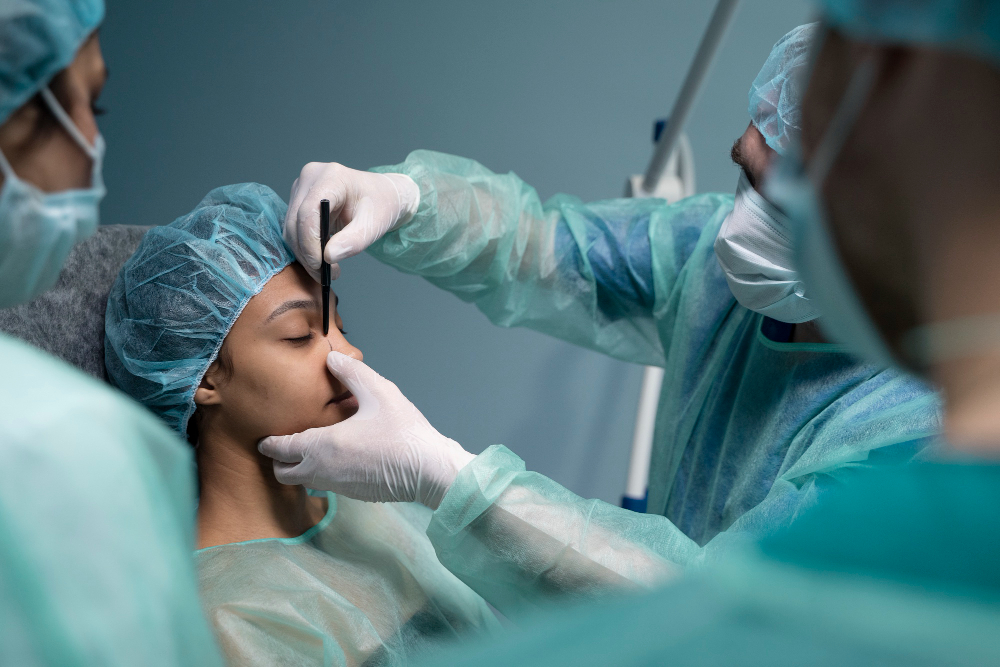
Demystifying LASIK Surgery: Common Questions Answered
Laser-assisted in situ keratomileusis, most commonly known as LASIK, has become one of the most sought-after elective procedures globally, offering a high success rate for patients dealing with nearsightedness, farsightedness, and astigmatism.
If you’re considering LASIK eye surgery in Dubai, you’re embarking on a journey towards visual freedom. Its beauty lies in its potential for permanent effects, liberating you from the constraints of glasses or contact lenses. Advanced technology has increased the effectiveness of LASIK and made the procedure more affordable in recent years.
In this guide, you’ll get the answers to the most common questions surrounding LASIK, providing insights that can help you make an informed decision for your eye health.
1. How does LASIK work?
LASIK is a revolutionary procedure designed to alter the cornea’s shape permanently. This transformation aims to improve your eyesight, bringing it to a normal or near-normal state.
Here’s a step-by-step breakdown of the LASIK procedure:
Step 1. Numbing drops
To ensure your comfort during the procedure, your eye surgeon will put numbing drops into your eyes. This eliminates any potential pain, making the experience as smooth as possible.
Step 2. Suction ring and eyelid speculum
Next, a painless suction ring and eyelid speculum are placed on your eye. These devices serve the essential purpose of keeping your eye in the correct position and preventing involuntary blinking. You might feel a slight pressure on your eyelid, but rest assured, it’s a normal sensation for this procedure.
Step 3. Creating the corneal flap
Your eye surgeon will then make a thin flap in your cornea. Imagine this as lifting and folding a page in a book. This step is crucial as it provides access to the underlying corneal tissue for the laser reshaping process.
Step 4. Laser reshaping
With your corneal flap gently lifted, you’ll be asked to focus on a light aimed towards your eye. Simultaneously, a precision laser is employed to reshape your cornea.
You might hear a clicking sound during this stage, and there might be an unusual smell. Rest assured, it’s not your eyes burning; it’s simply a byproduct of the laser’s interaction with the cornea.
Throughout the laser treatment, your doctor monitors your eye’s position closely. If any movement is detected, the laser automatically halts, ensuring precise and accurate corrections.
Step 5. Corneal flap replacement
Once the laser reshaping is complete, the corneal flap is returned to its original position carefully. It begins reattaching immediately and continues to heal after you leave the surgical facility.
2. Does LASIK hurt?
One of the primary concerns for those considering LASIK is the fear of pain during and after the procedure. Fortunately, LASIK is designed to minimise discomfort, and technological advancements have made the process remarkably smooth.
Before the procedure begins, your eye doctor applies numbing drops to ensure that you won’t feel any pain throughout the surgery. While some patients might experience slight pressure or sensations, the overall consensus is that LASIK is a relatively painless process.
Immediately following the surgery, you may notice a gritty feeling, itching, burning, and increased tear production. These are normal and typically subside as your eyes start to heal.
Generally, pain is minimal. Many patients report feeling little to no pain during the recovery period. Your eye doctor may provide pain medicine or recommend eye drops to keep you comfortable in the hours following the procedure.
3. Am I a candidate for LASIK surgery?
If you’re considering LASIK, you must understand the conditions it can address and the factors determining whether it’s the right solution.
Some of the conditions LASIK can address include:
- Nearsightedness (myopia): This is when an eyeball has a slightly longer than typical or sharply curved cornea, making distant objects appear blurry while close ones remain clear.
- Farsightedness (hyperopia): This condition is often a result of a shorter-than-average eyeball or a flat cornea, causing blurry near vision or, at times, distant vision.
- Astigmatism: This is characterised by an uneven curvature of the cornea, which can affect both near and distant vision.
If you currently wear contact lenses or eyeglasses, LASIK might be a suitable option. Your eye doctor in Dubai will assess whether LASIK or a similar refractive procedure aligns with your specific needs and preferences.
However, not everyone is an ideal candidate for LASIK. Approximately one in five individuals seeking LASIK have conditions that may limit their eligibility. These conditions include:
- Unstable Vision: If your prescription frequently changes, LASIK may not be the most suitable option.
- Extreme Refractive Errors: Individuals with extreme nearsightedness, farsightedness, or astigmatism may require alternative solutions.
- Corneal Thickness: LASIK involves reshaping the cornea. So, if your corneas aren’t thick enough for the procedure, your doctor may recommend an alternative approach.
- Severe Dry Eye Disease: Pre-existing dry eye conditions may impact your candidacy for LASIK.
- Keratoconus: A progressive thinning of the cornea may require different interventions.
- Cataracts: LASIK isn’t designed to treat cataracts, and cataract removal may be necessary before considering refractive surgery.
- Other Medical Conditions: Conditions such as glaucoma, diabetes, or autoimmune diseases may need careful consideration before opting for LASIK.
4. How long will my vision be blurry after LASIK?
Blurred vision is normal immediately after LASIK. While improvement is noticeable within a few days, it can take up to two to three months for your eyes to fully heal and your vision to stabilise.
Remember, the blurriness you experience is temporary, and the extent of improvement depends partly on your pre-surgery vision. Patience and adherence to post-operative care instructions are key to achieving optimal results.
5. How many days of rest is required after LASIK surgery?
Recovering from LASIK is swift, with many individuals able to resume daily activities within a few days. While the process is quick, you must exercise caution and adhere to post-operative care instructions for optimal results.
Most people can return to work or drive shortly after LASIK, but you must still exercise caution, especially if you have blurred vision. It’s advisable to wait until your vision has cleared before driving or operating tools and machinery.
Certain activities should be limited as your eyes heal. Follow your ophthalmologist’s personalised advice, but here are some general guidelines:
- Exercise and contact sports: Wait three days before engaging in non-contact sports. Give it a month before participating in contact sports like football or karate.
- Makeup and Lotions: Refrain from using makeup or lotions near your eyes for at least two weeks.
- Swimming and Hot Tubs: Wait one to two months before diving into pools, hot tubs, or whirlpools.
A Final Word
Getting your questions answered before LASIK helps you know what to expect and gives you peace of mind during the procedure. If you’re unsure about something, consult a local eye doctor for personalised insights.

Demystifying Tummy Tucks Popular Questions Answered
What Does a Tummy Tuck (Abdominoplasty) Involve?
An abdominoplasty surgery—also known as a tummy tuck—involves making an incision from hip to hip on the lower abdomen. Commonly, the incision is placed just below the panty line. Occasionally, the incision may extend over the hips. Through this incision, the plastic surgeon removes excess skin and fat from the abdomen. Usually, they will also perform diastasis recti repair which stitches together separated abdominal muscles. This final step helps tone and further flatten the abdomen as well as promote long lasting results by strengthening the abdominal muscles.
Am I a Good Candidate For This Procedure?
Tummy tuck Sarasota patients do share traits that make them an all-around good candidate. A tummy tuck takes several hours to complete and can involve an intense recovery. Thus, requiring a prepared and well-informed patient. Some factors that determine candidacy include:
- Current medications
- Medical conditions
- Previous abdominal surgeries
- If a patient plans to have any future pregnancies
- Ability to withstand general anesthesia
- Amount of protruding stomach consisting of extra skin
- Age
- Long term outlook
- Patient’s understanding of the procedure
- Patient’s goals and expected results
A Few Example Patient Profiles:
After having three children, a woman in her 30s to 40s presents with stretched and separated abdominal muscles (diastasis recti). This has affected her ability to exercise and maintain urinary continence. The patient also has significant extra skin on her lower abdomen. The patient does not plan to have any more children. Thus, she is a good candidate for a traditional tummy tuck surgery.
A 35-year-old man lost over one hundred pounds and experienced sagging, loose skin as a result. The patient is within ten pounds of their final goal weight and has maintained their current lifestyle for several months. The patient could benefit from an abdominoplasty to remove the excess skin on his abdomen.
There are—of course—several other types of patients who may qualify for a tummy tuck. Pregnancy and major weight loss are the two most common causes of the need for abdominoplasty surgery. The best way to determine candidacy is to consult with a qualified plastic surgeon.
Will I Have Visible Scars?
Tummy tuck scars are designed to be placed below the panty line. Thus, they should be concealed by most undergarments and swimsuits. Certain kinds of tummy tucks—namely a fleur-de-lis tummy tuck—may involve more visible scars. Usually, tummy tuck scars are easy to conceal.
Your surgeon may provide tips for managing your scar during and after recovery. For example, making sure to keep the scar out of the sunlight for several weeks or months helps prevent the scar from becoming overly pigmented. Some surgeons may recommend silicone sheets or scar creams.
Can I Have a Mini Tummy Tuck (Mini Abdominoplasty) Instead of Full Abdominoplasty?
A patient may be a candidate for a mini tummy tuck if the extra skin does not extend above the belly button. The incision remains the same, but the abdominal muscles generally do not need to be repaired or tightened. The belly button also is not recreated or repositioned.
Mini tummy tuck patients will have less extra skin and may have tight and intact abdominal muscles. Some women may only need a mini tummy tuck after a single pregnancy or moderate weight loss. The majority of abdominoplasty patients qualify for a fully tummy tuck.
Will Liposuction Work Instead of a Tummy Tuck (Abdominoplasty)?
Liposuction is a minimally invasive surgery that uses a cannula to break up and remove excess fat. It involves only tiny incisions and can treat multiple areas. Many patients undergo liposuction and tummy tuck Sarasota together. In the right patient, they can complement the results of one another.
In rare cases, liposuction may replace a tummy tuck. This is only when no muscle repair is necessary, extra skin is minimal, and the skin is expected to adequately retract.
How Long Does It Take To See Results?
Like most cosmetic surgeries, results are considered final in nine to twelve months. However, patients may see significant results within three to six months. Factors that can slow down recovery include smoking, not following post-op protocols, and returning to activity too quickly.
How Long Do Results Last?
As long as a patient maintains a healthy and active lifestyle, they can expect to maintain their results long term. It is also important that a patient does not get pregnant after a tummy tuck if they want permanent results. Pregnancy stretches the abdominal muscles and often causes extra skin.
What is the Recovery Process Like?
Patients may experience some pain and discomfort after surgery. It tends to be the worst for the week following surgery. Major side effects like swelling and bruising should significantly improve within two to three weeks. Every surgeon will have their unique recovery protocols. However, patients can expect directions such as:
- Remain hunched over to prevent stress on the incision
- Sleep sitting at roughly a 45-degree angle
- Avoid strenuous activities for at least two to three weeks
- Do not smoke
- Get up and walk frequently
- Do not submerge the incision
- Keep the incision out of the sun
- Get adequate rest, eat a healthy diet, and stay hydrated
Will Tummy Tuck Surgery Help Me Lose Weight?
Tummy tuck surgery is not a weight loss surgery. It helps contour the body—especially after weight loss—by removing extra skin. On its own, it does not promote long term weight loss or management. While it can be motivating for some patients, it is not a reliable way to lose weight. Additionally, patients should be close to their goal weight before abdominoplasty surgery. Most patients do not lose any way as a result of tummy tuck surgery. It is best that patients have maintained their lifestyle for at least three months before undergoing a tummy tuck.
Does a Tummy Tuck (Abdominoplasty) Remove Fat?
A tummy tuck may reduce a small amount of abdominal fat. For the best results though, adding liposuction to a tummy tuck will remove more fat. If the primary concern is fat, patients may consider liposuction instead.
How Long Will I Need to Take Off Work After Surgery?
Patients should plan for about two to three weeks off work. However, patients with physical jobs may need longer off or to return on light duty. Every patient’s timeline will look slightly different. Factors that influence return-to-work timelines following a tummy tuck Sarasota include:
- How well the patient heals
- If the patient smokes
- Diabetes or similar conditions
- How well a patient adheres to post-surgery restrictions
- The type of job the patient works
- Pain level and how the patient manages it
When Will I Be Able to Return To My Normal Activities?
Patients may begin to return to light activities that do not place major stress on their incision after two to three weeks. This can include activities like walking, light aerobics, housework, and stretching. However, activities such as intensive cardio or weight lifting will likely need to wait six to eight weeks before resuming.
How Soon Can I Exercise After a Tummy Tuck (Abdominoplasty)?
Patients can take longer, light walks once they feel comfortable. Generally, surgeons recommend that patients wait until the two-week mark or when they no longer need to hunch over. The patient’s surgeon will advise them when they can return to all forms of activity. Thus, it is important to stay in contact with your surgeon post-surgery.
How Painful Is a Tummy Tuck (Abdominoplasty)?
Cosmetic surgeons generally prescribe pain medications following tummy tuck Sarasota surgery. Patients are encouraged to cease them as soon as they feel able. In addition to the pain medications, patients may also receive prescriptions for anti-nausea medication and antibiotics. Patients should take the medications as prescribed.
How Much Does Tummy Tuck (Abdominoplasty) Surgery Cost?
The cost of tummy tuck Sarasota depends on several factors such as location, experience of the surgeon, type of tummy tuck, and any special considerations necessary. Financing is available through outside sources such as Care Credit. Patients should be prepared and explore financial options before their consultation, if possible.
Is Tummy Tuck (Abdominoplasty) Surgery Covered By Insurance?
An abdominoplasty is rarely covered by surgery. One exception is in the case of a panniculectomy. While technically different from a tummy tuck, it performs much of the same purposes, and a tummy tuck is generally combined with pannus removal. A panniculectomy removes a stomach that hangs below the stomach and may obstruct other anatomy or make daily activity difficult.
Can I Combine Other Procedures With a Tummy Tuck?
Combining surgeries—when performed on a patient who is a good candidate for combined surgeries—can lessen recovery time when compared to undergoing two separate surgeries. It also allows patients to recover from both procedures at the same time, cutting overall recovery time. Common and popular combinations include tummy tuck with liposuction, tummy tuck with Brazilian butt lift, and tummy tuck with breast augmentation.
How Should I Prepare Before Surgery?
- To prepare for tummy tuck Sarasota surgery, patients should:
- Obtain any necessary medical clearances
- Secure financing if necessary
- Get time off work
- Make hotel, travel, and childcare arrangements
- Fill prescriptions before surgery
- Have different types of food on hand for recovery
- Wear button down or zip up clothing
What Happens If I Decide to Have More Children After Surgery?
There is no medical risk to having children after a tummy tuck surgery. However, it will likely reverse results and require a revision surgery if the patient hopes to maintain their original result. Patients should closely consider if they want more children or if they are okay with needing future surgery.
Are There Any Risks of Tummy Tuck (Abdominoplasty) Surgery?
Risks of a tummy tuck:
- Infection
- Raised or visible scarring
- Pain
- Muscle tightness
- Opening of the incision
- Skin death
Cosmetic surgeons reduce risk through several methods such as patient screening, limiting bleeding during surgery, and making patients follow pre-op instructions like quitting smoking. Patients may also need to alter their normal medications.
Preparing for Consultation
Dr. Alberico Sessa of Sarasota Surgical Arts has nearly two decades of experience providing the best tummy tuck Sarasota has to offer. When consulting with Dr. Sessa or any other surgeon, research them and the procedure first. Understand the type of results they provide and their credentials. Patients may also prepare questions to ask during the consultation:
- What types of tummy tuck do you perform?
- How do you minimize risk during surgery?
- What previous experience do you have with abdominoplasty surgery?
- Do you routinely combine tummy tucks with other surgeries?
- Do you offer financing options?
- How much does tummy tuck cost?
Patients will likely have their own questions which is encouraged. Make sure that you have all of the information you want and need before moving forward with the procedure. To learn more and schedule a consultation with Dr. Sessa, call us at 941-923-1736. Patients can also reach out online via chat, Price Simulator, and our contact form.

6 Food Nutrient to Supercharge your Immune System
A body system that protects the body from viruses, bacteria, parasites, and other harmful creatures, known as Immune System. But in that time people are not as much aware of their immunity strength as they have to be. Even people don’t know which nutrients and ingredients he uses for the betterment of their immune system. In this article, we discuss the six topmost Nutrients which help you to improve your immunity and strengthen your Immune system. Nutrient in Food help our immune system to generate more and more immune cells and they work as antioxidants and protect healthy cells, produce antibodies in our body, transfer signals from one nervous system to another.
Epidemiology established that such person who is not well nourished, those people get affected by bacteria, viral and other infection rapidly than to the well-nourished person. So, It is essential to all to nourish our body to be fit and fine,
Below you find some essential nutrient to Supercharge our Immune system.
VITAMIN C:
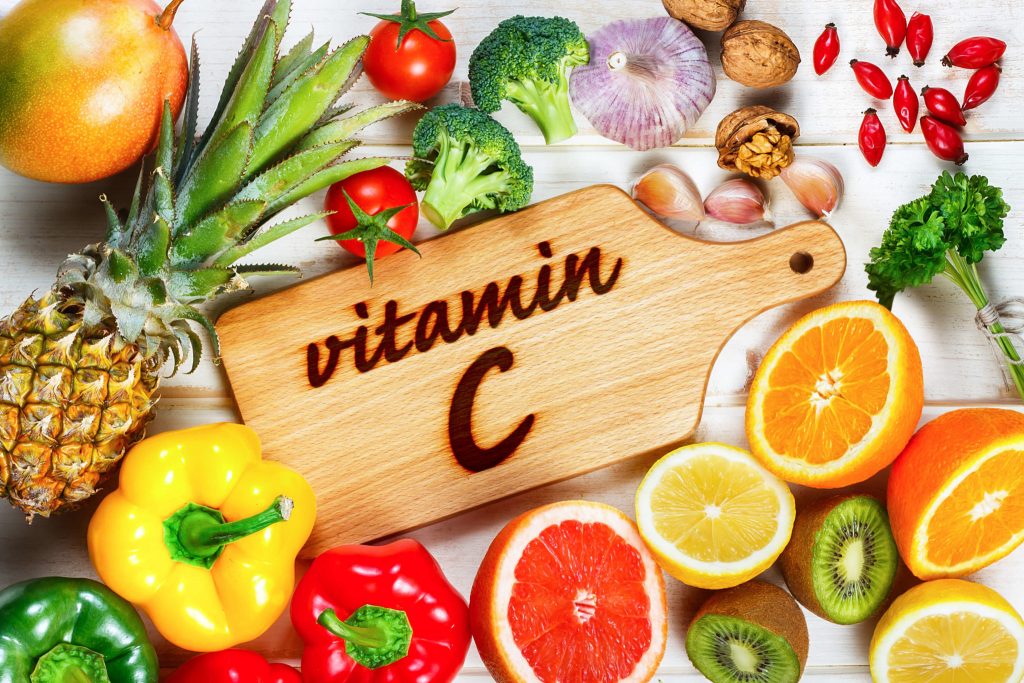
It is the topmost nutrient that helps us to Supercharge our Immune system. In another case, if you have lack Vitamin C you feel more prone to getting sick. Vitamin C works as a potent antioxidant and also a cofactor for a family of biosynthetic, gene regulatory enzymes. Vitamin C supports the immune defense system by support in many cellular functions in both types of immune systems.
Here are some of the fruits which rich in Vitamin C are orange, lemon, grapefruit, kale, spinach, strawberry, bell peppers, and broccoli.
The studies and observations show that lack of Vitamin C shows poor immunity. And its deficiency causes a high risk of virals and infection ( pneumonia ).
Because of our can’t store or create vitamin c so, everyone needed to take it. One of the interesting thing about the Vitamin C is that it is present in most things what we daily take so, need to take supplements for Vitamin C but need to check to take insufficient amount.
Vitamin B6 :

Our body needs Vitamin B6 to absorb vitamin B12 and also to make red blood cells (RBC) of the immune system. Vitamin B 6 helps to make neurotransmitters like serotonin chemical which carry the signal in our nervous system from one to another.
The deficiency of Vitamin B6 causes disturbance in our Immune system, it can easily understand this, deficiency inhibits the production rate of antibodies in our body and also reduces the production of WBC ( white blood cells ).
As we know the biochemical reactions must perform in our Immune system. Vitamin B6 – rich in food cold-water fish, chicken, and also green vegetables, it is the main ingredient of hummus
Food Contains Vitamin E is Nutrient :
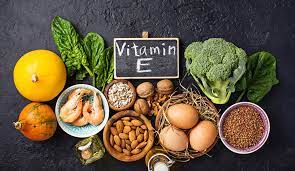
As we know vitamin E is also a good antioxidant that helps the body to fight against viruses, virals, and infectious diseases. It prevents lipid peroxidation and associates cell membrane damage. Vitamin E helps in the maintenance of integrity part of the cell membrane, maintain signal transduction and also produce many of the protein.
Lack of Vitamin E may pause or slow the manufacturing process of immune cells.
Vitamin E directly Supercharge our Immune system we can take it by regular use of such ingredients as nuts, seeds, and spinach, etc.
ZINC :

Zinc is an essential nutrient for us in growth as well as in the immune system. Zinc plays a vital role in our Immune system such as a signal transporter in our CNS(center nervous system), Zn is also essential for monocytes/macrophages and anti-bacterial cells. Zn also shows the antioxidant properties.
Lack of Zn cause many problems related to the immune system such as cell-mediated immune dysfunctions, and abnormal neurosensory changes
Zn produces naturally and found in beans, fishes, meat, dark chocolate, legumes, etc.
CAROTENOIDS :

Carotenoids are the pigment found in plants, algae, and bacteria. Carotenoids are the reason that’s why plants show different colors. There 600 different types of carotenoids founded yet. They also act as an antioxidant for the human body, so, they also boost our Immune system
Some carotenoids are known to exert multiple protective effects in the function of the cellular immune system. It also minimizes the UV rays effect by sunlight.
Food nutrient that is rich in carotenoids is apricot, broccoli, squash, sweet potato, peaches, etc.
FATTY ACIDS :
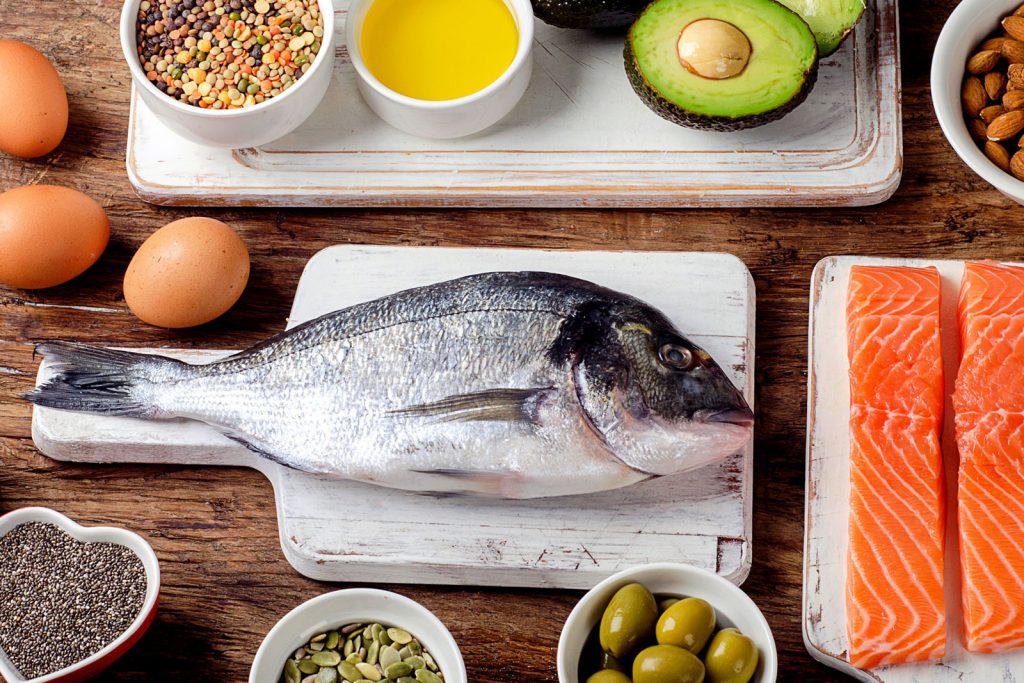
In the Immune system, fatty acids have their vital role, and they also boost up our Immune system. Fatty acids work as a source of energy, signal transduction, as a structural component of cell membranes. Omega-3 fatty acids can also boost your memory.The cause of fatty acid shows the property of anti-inflammation so, it directly helps to boost our Immune system.
Lack of fatty acids causes the inhibition of mediator immune cells. Food rich in fatty acids is fish, seafood ( tuna, salmon, herring), nuts, seed( flaxseed, chia seed, walnut), and plant oil.
Top 10 Best Dental hospitals in Chennai
Your teeth are an integral part of your body. If you lose it for some reason, you will not be able to play it. Therefore, you must take good care of it. Regular visits to the dentist are required to maintain optimal oral health. Early detection and timely treatment of many oral health problems, from tooth decay to oral cancer, can be treated by the skilled hands of a dentist. Poor tooth care can lead to a variety of dental illnesses. Prevention of most dental illnesses can be achieved by observing oral hygiene. Still, you are very likely to suffer from at least one of the tooth conditions during your life.
Importance of dental health:
Good oral/dental health means overall health. Dental problems such as tooth decay and periodontal disease can affect your ability to eat and talk, causing pain and bad breath. And what many may not know is that poor dental health can have serious adverse effects on areas outside the mouth, such as chronic inflammation such as heart, diabetes, pregnancy, and arthritis. about it. Some studies suggest that when periodontal disease occurs, bacteria can enter the heart and cause heart disease, arterial blockage, or stroke. Gingival infections such as periodontal disease are associated with preterm birth and low birth weight in pregnant women. Diabetes reduces the body’s resistance to infections and makes the gums more sensitive to infections that can adversely affect blood sugar levels. And painful mouth ulcers are common in HIV patients.
Importance of regular dental visits:
Dental appointments should only be made if there is a problem that needs to be addressed. Prevention is always better than regimen, and there are many other reasons why regular visits to the dentist’s office are important. This is one of the most important things a dentist does every time he gets an examination. The dentist tests for signs of oral and head and neck cancer. To do this, they check for lumps on your head and neck. Also, look for red or white spots in the mouth. Normally, these checks do not find anything unusual, but they can save lives.
1. Rajan Dental:
Visit Rajan Dental Clinic in Chennai, one of the top 80 dental clinics in the world. With a GCR score of 4.2 / 5, it is one of the top dental clinics in Chennai, India. 100.0% of the 175 patients were satisfied with the treatment at this dental office. Rajan Dental’s doctors specialize in implants, dentistry, oral and maxillofacial surgery, endodontics, and orthodontics. Rajan Dental’s clinical staff includes implant science, dental surgery, oral and maxillofacial surgery, general dentistry (dental assistant), aesthetic dentistry, orthodontics, periodontal disease, endodontics, oral cavity, maxillofacial and facial radiation. See More..

2. Acharya Dental:
Acharya Dental was founded by Dr. in 1974. Vijayalakshmi Acharya was founded. Located in the heart of Nungambakkam’s 4,000-square-meter area, Acharya Dental offers 16 well-equipped dental practices in a sparkling, clean, comfortable, and hygienic environment. A team of dedicated professionals and general dentists welcomes patients with the ideal blend of Western technology and Eastern skills. See More..

3. Gold Dental Hospital:
GOLD Dental Hospital is India’s fastest growing dental chain. Its branch spans Chennai and Tamil Nadu, the cultural centers of India. Gold Dental Hospital was founded by two successful doctors, PhD. SUGUMAR and Dr PREM ALEX LAWRENCE were founded to provide international quality dental care to all. Since then, there has been no turning back and there are now more than 50 experienced dentists providing the highest quality treatments. See More..
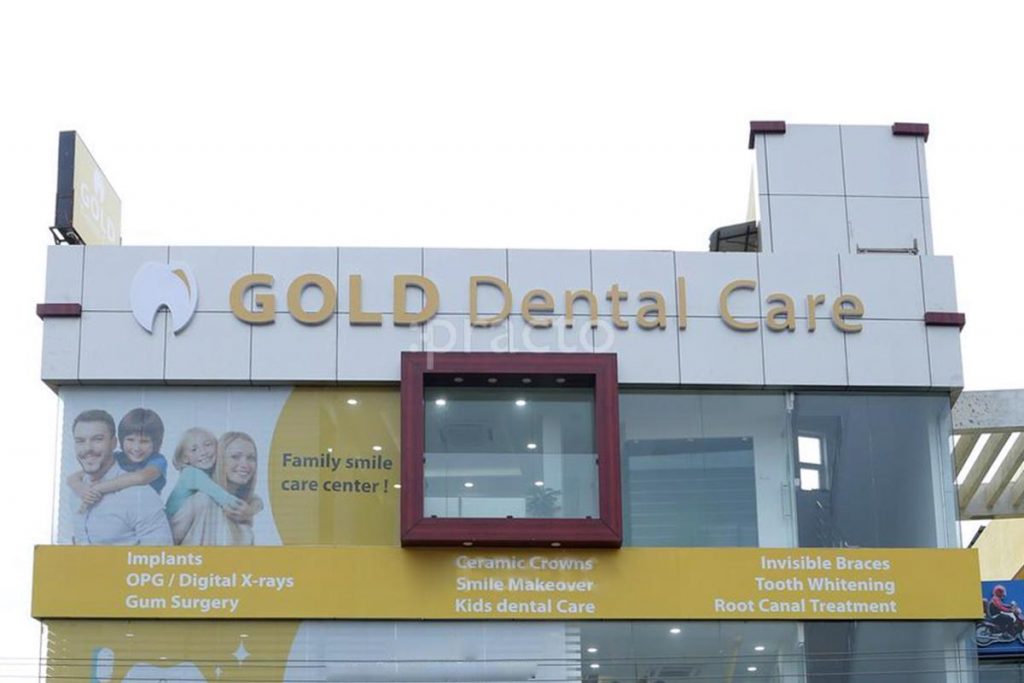
4. Balaji Dental and Craniofacial Hospital:
Balaji Dental & Craniofacial Hospital is a prestigious multidisciplinary dental and surgical care center. With state-of-the-art equipment and state-of-the-art technology, we provide state-of-the-art treatments for craniofacial and skull deformities, facial defects, facial and jawbone fractures, and tooth and maxillofacial disorders. We are an ISO 9001: 2015 accredited dental clinic, providing first-class oral care. See More..

5. Implantree International Dental Hospital:
Visit the Implantree International Dental Hospital in Chennai, one of the 160 best dental clinics in the world. With a GCR score of 3.9 / 5, it is one of the top dental clinics in Chennai, India. 100.0% of the 5 patients were satisfied with the treatment at this dental office. Physicians at Implantree International Dental Hospital specialize in aesthetic dentistry and aesthetic dentistry, aesthetic laser treatment, implant science, aesthetic dentistry, and laser dentistry. The clinical staff at Implantree International Dental Hospital includes many specialists in various departments such as aesthetic dentistry, aesthetic dentistry, See More..
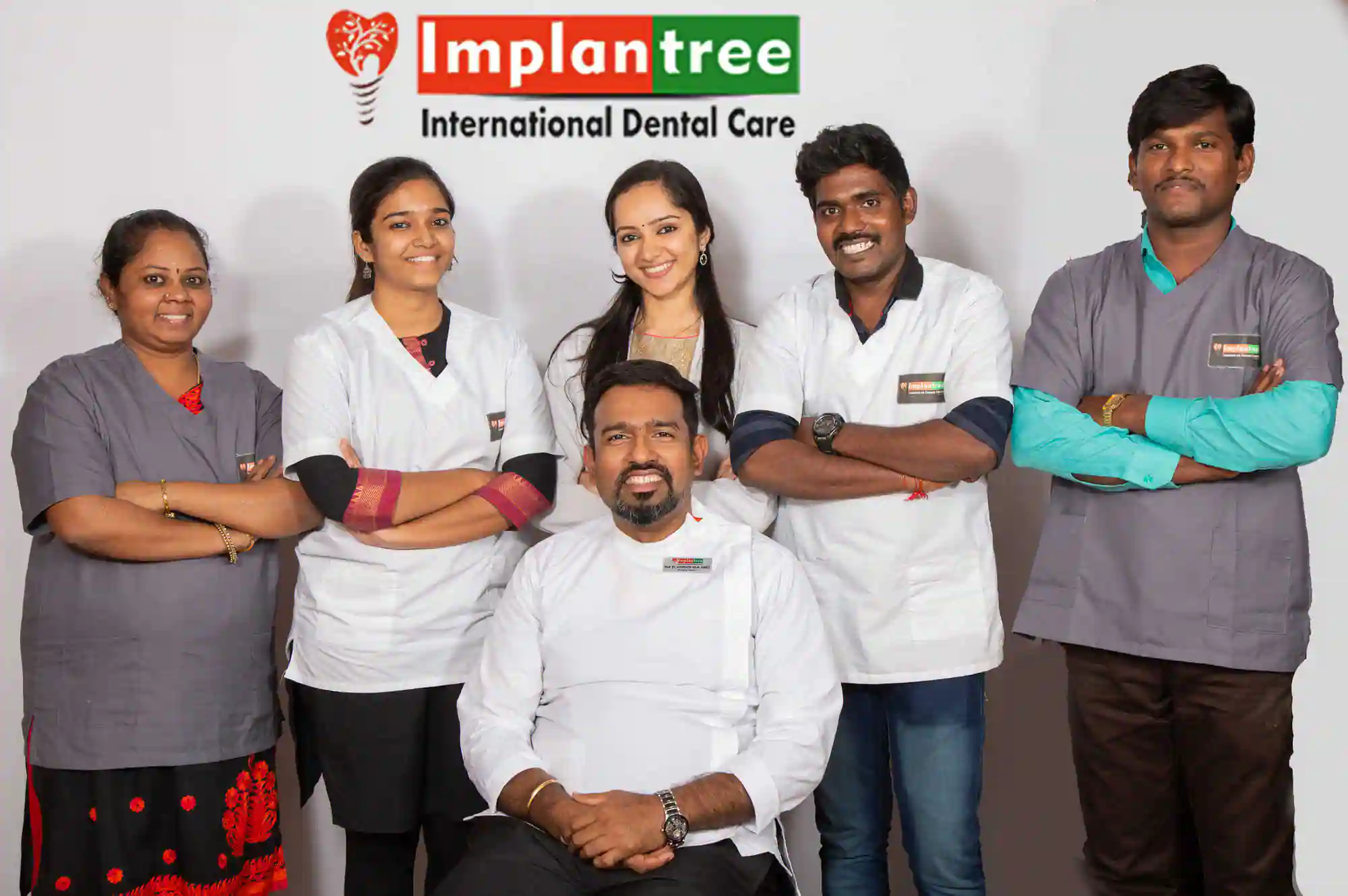
6. Say Cheese Dental Care:
Outstanding standards in personalized dental care enable us to provide the highest quality dental services for our patients. We offer a comprehensive treatment plan and use restorative and aesthetic dentistry to achieve optimal dentistry. In the event of a dental emergency, we will do our best to see and treat you as soon as possible. Say Cheese Dental Care’s clinical staff includes many specialists in various departments such as endodontics, See More..
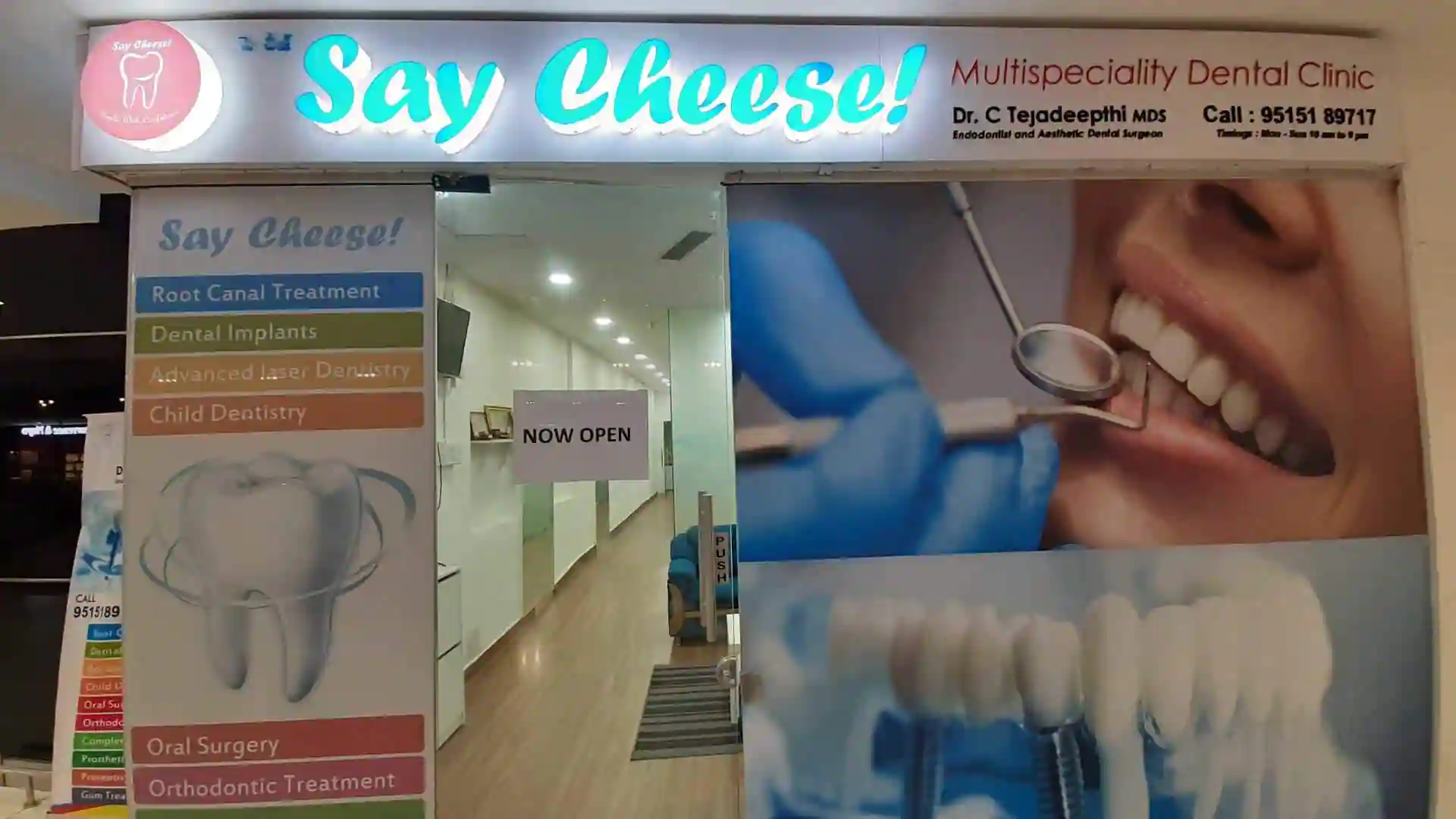
7.Sparks dental clinic:
A major specialized dental clinic in Chennai dedicated to the needs of South Indian dental surgery. Sparks Dental Center was opened in 2007. Since its inception, Sparks has pioneered expertise and facilities in maxillofacial surgery and aesthetic dentistry. Our mission is to provide the best dental care. See More..
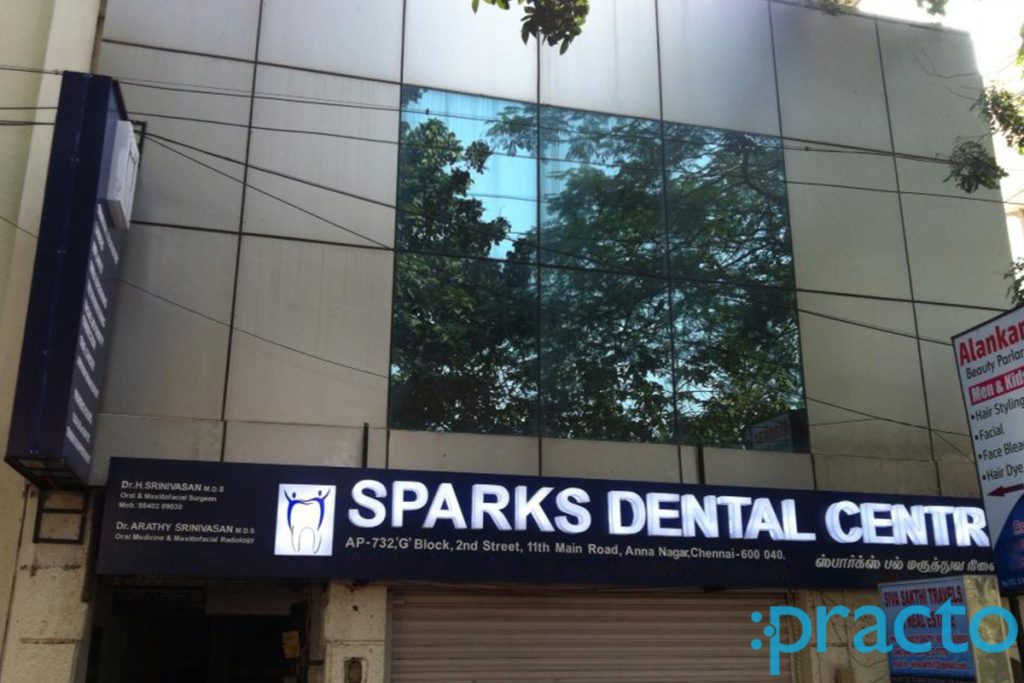
8. Yours Dentally:
Yours Dental is a professional multi-specialist dental centre in the heart of Chennai, easily accessible to men and women of all ages. The clinic is a passionate initiative by two like-minded dentists whose dream is to provide preventive, interception, and orthodontic procedures under one roof, quiet and technologically advanced hygiene. Was to build a typical dental centre. Yours Dentally’ s clinical staff includes many specialists in various departments such as laser dentistry, restoration dentistry, See More..

9. Jay’s dental care:
Jays Dental Care is an international clinic with over 20 years of excellence, the largest NABH accredited dental clinic in India and holds several additional certificates. Specialization in endodontics, laser cavity detection, implants, laser dentistry, maxillofacial surgery, orthodontics, painless dentistry, pediatric dentistry, periodontal disease, prosthodontics (crown & bridge), tooth whitening related to modern facilities The field makes J’s Dental Care a place for your treatment. This medical facility participates in the GCR membership program. As a GCR member, the clinic demonstrates its commitment to implementing best practices and transparency related to international standards. See More..
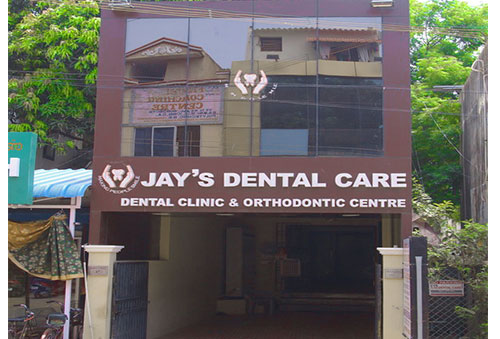
10. Just smile dental specialties:
Visit Just Smile Dental Specialties Clinic, one of the 50 best dental clinics in India. With a GCR score of 3.5 / 5, it is one of the top dental clinics in Chennai, India. 100.0% of 41 patients were satisfied with the treatment at this dental office. Doctors at Just Smile Dental Specialties specialize in orthodontic and Invisalign Clear Braces procedures. The staff at the Just Smile Dental Specialties Clinic includes many specialists from various departments such as Orthodontics and Invisalign Clear Bracelets. See More..
How to take care of teeth:
Healthy teeth need to be taken care of for the rest of their lives. Even if you are told that you have beautiful teeth, it is important to take care of them and take the right steps every day to prevent problems. This includes purchasing the right oral care products and paying attention to your daily habits. If you experience pain, bleeding gums, swelling inside or outside the mouth, tenderness, blisters, or ulcers that do not heal, or noticeable changes in the colour or texture of the soft tissue, you should see a dentist. All of these can indicate serious or potentially serious medical conditions such as oral cancer or chronic periodontal disease. It’s no secret that the general recommendation is to brush at least twice a day. Still, many of us neglect to brush our teeth at night.
Outlook:
It is important to brush with a fluoride toothpaste at night and at least once more during the day. Eating and drinking sugar and acidic foods naturally weaken the enamel of your teeth. Brushing directly can result in small particles of enamel being brushed. It’s best to brush your teeth an hour after eating. It is especially important to brush before bedtime. This is because saliva, the cleansing system of the mouth itself, slows down at night, increasing the risk of tooth decay.

Effective Ways for Blood Pressure Treatment
High blood pressure or hypertension is a dangerous disease because it can put you at risk for heart failure, kidney failure, stroke or other serious medical conditions. But the good thing is that the risks associated with high blood pressure can be greatly reduced by making certain modifications in your lifestyle as well as taking your medicines. Possibility of High Blood Pressure Treatment is something no one should ignore.
What is High Blood Pressure?
It is the force of blood pushing against the walls of arteries. When the pressure is consistently higher than the normal, then you are diagnosed with the condition called “Hypertension”
To make it simpler, let’s understand how it works:
The heart is an organ whose primary responsibility is to pump blood. The deoxygenated blood reaches the heart which is then oxygenated and delivered through the blood vessels to other organs of the body. Each heartbeat is the manifestation of this blood pumping process. When the heart beats, it creates pressure which pushes the blood throughout the vessels.
Blood Pressure is Created by Two Types of Forces:
Systolic pressure: It is the top number of the blood pressure reading which measures the pressure on the blood vessel walls when the heart contracts or as the blood pumps out of the body.
Diastolic Pressure: It is the bottom number of the blood pressure reading which measures the blood pressure when the heart rests between the beats.
Know your numbers!
If your blood pressure reading is 130/80 mm Hg, the systolic pressure is 130 mm Hg and diastolic pressure is 80 mm Hg.
Keeping this in mind, let’s understand the stages of hypertension:
Elevated: When the systolic level is between 120- 129 mm Hg and diastolic level is between 80- 89 mm Hg.
Hypertension stage 1: When the systolic level is between 130- 129 mm Hg and diastolic level is between 80- 89 mm Hg.
Hypertension stage 2: When the systolic level is between 140- 180 mm Hg and diastolic level is between 90- 120 mm Hg.
Hypertensive Crisis: When the systolic level is above 180 mm Hg and diastolic level is above 120 mm Hg.
Symptoms of High Blood Pressure
Most people with hypertension do not experience any symptoms which is why it is also called the “Silent Killer”. But a few people may have:
- Headache
- Nose bleeding
- Dizziness
- Heart palpitations
- Shortness of breath
- Vomiting
- Blurred vision
Treatment
Medications: The medications will depend upon how severe the hypertension is or whether there is risk of cardiovascular or other diseases. Your doctor may recommend one or combination of several different medicines which may change over time depending upon your condition. Therefore, you should work with a health care provider and only take prescribed medicines in the right dosages.
The hospitals that you can visit for the treatment of high bp :
- Ginihealth: Ginihealth is a new-age healthcare provider offering preventive and personalized healthcare services for various lifestyle disorders. They have a specialized “Blood Pressure Management” programme which is designed to bring the blood pressure to optimal levels with the help of medications, nutrition and exercise plans. Along with optimizing the blood pressure levels, the programme also aims at reducing other health complications and improving the overall health of patients.
- Fortis Heart & Vascular Institute: Fortis hospital has a highly specialized and co-ordinated team for the treatment and management of high blood pressure. They use a holistic approach towards hypertensive management which includes medications as well as lifestyle changes. They also provide 24- hour care for patients with critical conditions and heart problems.
- Paras Hospital, Gurgaon: Paras hospitals provide high-quality and compassionate care to their patients at affordable prices. They help patients control hypertension with medical treatment as well as guiding them about healthy eating and weight reduction, providing them remarkable possible outcomes.
Follow the Dash Diet
DASH diet, which stands for Dietary Approaches to Stop Hypertension, emphasizes on adding fruits, vegetables, whole grains, high-potassium foods, and low fat dairy products in your diet while reducing sodium intake. Patients are advised to cut back on salt, sugar, refined carbohydrates and processed food such as soda, juice, chips, canned soup etc and increase the intake of healthier foods like avocados, oranges, sweet potatoes, bananas etc. The idea of DAS diet is basically to replace a low carb, low fat diet with a high protein, high fiber diet.
Move Your Body
If you’ve been inactive for a long time it can increase your blood pressure. Therefore you should get regular exercise. For that, you don’t necessarily need to hit the gym but any activity that gets your heart pounding like cycling, swimming, playing a sport or even walking briskly can help you reduce your blood pressure. You can start out slowly and then pick up the pace as you get stronger. The most important thing is to “move your body”.
Maintain a Healthy Weight
If you are overweight or obese, shedding even a few kilograms can have a significant impact on your blood pressure levels. The extra fat around your waist which is also known as visceral fat can lead to serious health problems including high blood pressure and heart diseases. Therefore, you should try losing a few inches around your waist.
Reduce Stress
Emotional stress can temporarily increase your blood pressure but if you have chronic stress it can make things even worse and you may experience a high blood pressure for an extended period of time. You should try to find out what triggers your stress and solutions to fix it. You can also try deep breathing, meditation and yoga for relieving stress. Find some time to unwind and relax as it can also help you manage your stress levels.
By making some positive lifestyle changes and consulting a healthcare provider, you can lower your blood pressure, prevent yourself from serious heart diseases and eventually increase your life expectancy.
